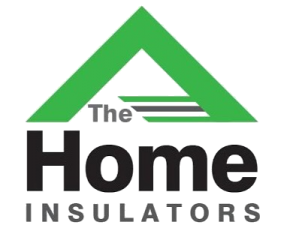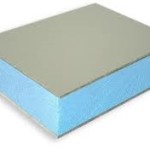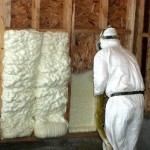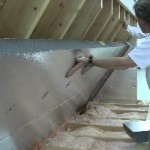Spray Foam vs. Rigid Foam
Big Jobs- the quality provided by spray foam is unmatched. Air sealing that is permanent and high R-value insulation is very easy to spray in open frames. Remember when the Pink Panther ruled the world of insulation, those days are numbered, a new day is dawning for the fluffy Foam Spray. Studies in home energy have shown that Foam Spray does outperform. The differences, can still be confusing. For Starters, spray foam that is Closed-Cell needs two parts to mix together. Also rigid insulation board have different thicknesses. The question then remains, which is the best to use? Energy efficiency is an important part of your life, we at The Home Insulator know how to save energy better than anybody. Call or e-mail us today to get a Free Evaluation of your home’s needs and a Free Estimate for upgrades that will save you in the long run.
Pros and Cons
PROS- Two Component Spray Foam
- Combines the One-Two punch of Air Sealing and Insulation. Expansion of the foam fills both gaps and cracks.
- Higher R-Value- 7 per inch- Varies with mixture
- Installs Quickly
- Stays for the Long Haul- Spray foam does not shift, settle, or get out of place.
CONS- Spray Foam
- Makes a Mess; if oversprayed, the foam needs to be removed.
- During installation protective clothing and respirator are required.
- Cold weather causes problems with the foams curing.
- R-Value can degrade slightly over time.
PROS- Rigid Foam Insulation
- Easy to work with
- No Protective equipment necessary
- Provide both insulation and air sealing if the seams between each of the panels are sealed with tape.
- Does not make a mess
- Varying thicknesses and R-Value Requirements are available
- Easy to cut panel that can be installed in any temperature.
- Safe to use and no toxic chemicals.
- Good for crawl space and basement walls
- Some include a radiant barrier for additional energy savings.
CONS- Rigid Foam Insulation
- R-value can vary based on the type of rigid foam. It can go as low as R-3.8 per inch or as high as R-8 per inch.
- Maybe more time consuming than using Spray foam, but not always.
- There might be instances where Single Component spray foam needs to be used around the edges of the rigid foam so the seal can take effect and the panel is held in its place.



